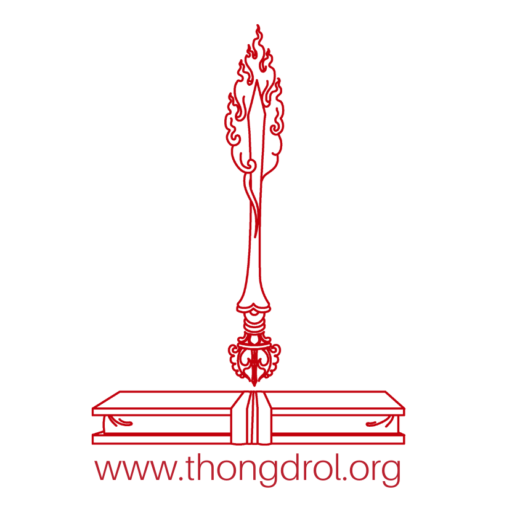Dechen Mönlam | བདེ་ཅན་སྨོན་ལམ། | Dewachen Monlam | བདེ་སྨོན། | thongdrol.org
Dechen Mönlam (བདེ་ཅན་སྨོན་ལམ་) is one of the most commonly recited aspirational prayers in Tibet and Himalaya. Originally composed by Karma Chakmé in eastern Tibet in the 17th century, this prayer deals with rebirth in the pure realm of Sukhāvatī (བདེ་བ་ཅན་), where the Buddha Amitabha is believed to reside. It belongs to the category of prayers recited to seek rebirth in Buddha realms that are considered conducive for spiritual practice to reach enlightenment. In short, it is called démön (བདེ་སྨོན་).
The prayer is divided into three main parts. The first part deals with the worship of Buddha Amitabha or Öpakmé. There are verses describing the location of the Sukhāvatī realm to the west of our world and the configuration of Buddha Amitabha and his retinue and disciples. The verses describe the figures of Amitabha and his disciples, followed by verses on the seven-part worship of the Buddha Amitabha including prostration, offering, confession, rejoicing, requesting to live long and teach the dharma, and the dedication of merits. Even those merely hearing the name of Buddha Amitabha are said to have the opportunity to take rebirth in his realm through the power of Amitabha’s prayers for sentient beings.
The second part describes the process of taking birth in Sukhāvatī out of a lotus flower and the happiness and bliss which fills his pure realm. This section contains verses describing the opportunities for enlightenment. It describes how one would be able to receive teachings from Amitabha and his retinue, from the Buddhas who visit Sukhāvatī, and also how one would miraculously travel to other pure realms to see other Buddhas to receive their teachings. Karma Chakmé presents a vivid picture of births and astral travels that are associated with such practices.
The third part deals with the sublime luxuries of Sukhāvatī and life in Sukhāvatī, which lasts for cosmic aeons. It talks about Amitabha passing into Mahāparinirvāṇa, just like the historical Buddha Śākyamuni did, and how Avalokiteśvara will become fully enlightened and take over the leadership in Sukhāvatī. Avalokiteśvara will also pass away after innumerable aeons, at which time Vajrapani will become the next regent. Amitabha, Avalokiteśvara, and Vajrapani form the divine trio of the Sukhāvatī realm although there are many other divinities and bodhisattvas in the realm, including Guru Rinpoche.
Dechen Mönlam is chanted mainly during Pure Land practices to obtain rebirth in Sukhāvatī. It is based on the teachings of rebirth in pure lands found in some Mahāyāna sutras. Thus, it is a practice common in Himalayan Buddhism and also in Chinese, Japanese and Korean Buddhism. It is also among the most common prayers recited during funerary prayers for the deceased in Bhutan. It is sung in sad and melodious tunes and often accompanied by offering of butter lamps and incense. Often, a bell is used by the lead person as a musical instrument to regulate and enhance the melody of the chanting.
While reciting Dechen Mönlam, it is important to visualize Buddha Amitabha and his retinue and to mentally carry out the worship with strong faith without any doubt of Amitabha or rebirth in Sukhāvatī. It is important also to reflect on the words of the prayer and live up to the ideals which Buddha Amitabha and the prayer presents. A short prayer for rebirth in Sukhāvatī, attributed to Nāgārjuna and rediscovered by Terton Migyur Dorji, a colleague and disciple of Karma Chagmé, is also chanted after the long Dechen Mönlam.
Note: This century old sacred prayer is compiled with text and audio for the sole use and benefit of people. It is not meant for any commercial purposes. Please feel free to use and share this.
Dewachen Monlam in PDF


